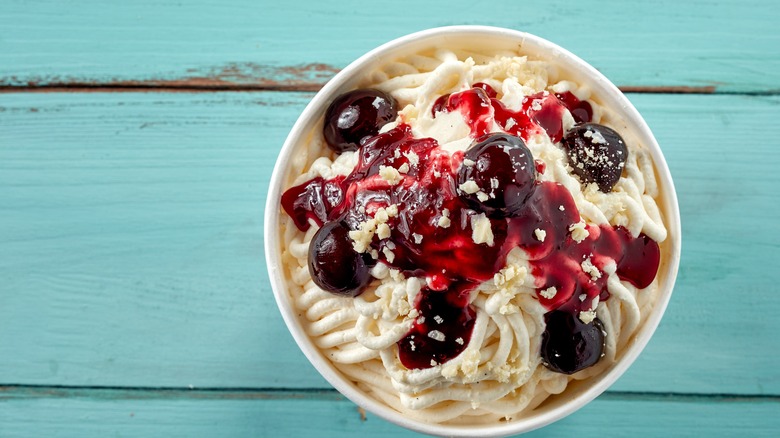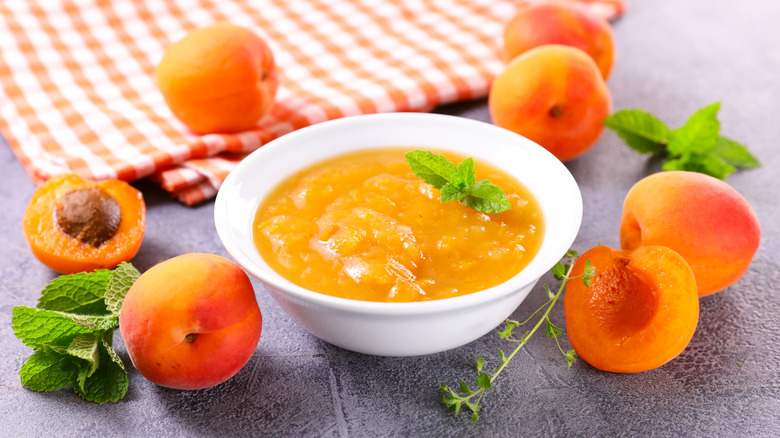Coulis Vs. Compote: How Different Are They Really?
Coulis and compote sound like high-brow French ingredients or words you only hear on cooking shows. Somewhere in the back of our minds, we know both are made with vegetables or fruit (so is jam, one might counter). In fact, almost anything can be used for coulis or compote, such as apples, figs, stone fruits, rhubarb, and berries for a sweet version and tomatoes and red peppers for a savory version.
Apart from that, coulis and compote are distinct and non-interchangeable sauces based on how it is made, their taste, texture, and standard uses. By learning these differences, you can better identify which sauce goes with which dish. Or, at the very least, it can be an interesting bit of trivia to share with your friends. First, the simple answer to how they are different, Coulis is a French term for "strain" or "flow," and it comes out as a thick sauce with a smooth texture. Compote, on the other hand, is a French term that means "mixture," and it has a chunkier consistency.
Coulis has a puréed consistency whereas compote contains chunkier ingredients
There are more detailed differences between the two. True to its name, coulis is made by puréeing fruits or vegetables with a small amount of sugar or lemon juice to enhance the natural flavors. After this, the mixture is strained through a fine-mesh sieve to remove the pulpy bit. The result is a silky, smooth sauce that is free of lumps or solids and reminiscent of the texture of heavy cream. If you want thicker, restaurant-quality coulis — the kind they use to decorate the base of plates — you need to first cook the ingredients. Based on this technique, fruit juice or cooked-down tomato sauce can be considered coulis.
In comparison, compote is a type of fruit spread that is made by cooking fresh or dried fruits with sugar and spices like cinnamon and nutmeg until they break down and release their juices. Some people may add a dash of liquor. So yes, compote is very similar to jam in that the final product has visible pieces of fruit and a syrupy consistency. But unlike jam, compote is not designed to be kept in the fridge because it has less sugar, which in turn means less preservative qualities.
How to use coulis vs. compote
Coulis may sound like an intimidating ingredient but once you consider that tomato sauce is a type of coulis, it becomes easier to use it in everyday cooking. It is best used as a sauce for savory dishes such as grilled chicken, fish, or roasted vegetables or as a marinade for meat. Once you have mastered that, you can get fancy and use coulis to add decorative elements to the dish. For example, use a spoon or even a squeeze bottle to create bright-colored coulis swirls on a plate before adding the main dish, even if it is just chicken nuggets.
Compote, on the other hand, has an element of rustic, homemade quality about it. It can be a filling for tarts, pies, or turnovers. It can also be a topping for pancakes, waffles, crepes, or yogurt. It also pairs well with roasted or grilled meats and cheese. MasterClass suggests that a sweet blueberry compote pairs well with a soft cheese like brie, while tart flavors like a rhubarb compote complement cheddar.


